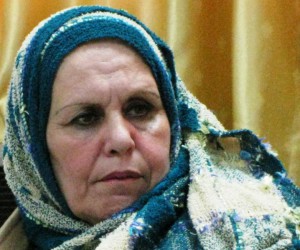The afternoon plenary (see here for the morning) consisted of talks by Drs Adel El Beltagy (GFAR) and Mark Rosegrant (IFPRI). Again, here’s what struck me particularly out of the many interesting things they said.
Day 1 at the Amman drylands conference
The international conference on Food Security and Climate Change in Dry Areas got off to a stirring start with a long, passionate and scientifically very literate speech from the guest of honour, HRH Prince El Hassan Bin Talal. That was followed by keynotes from Drs Mahendra Shah and Mahmoud Solh, who have a huge amount of experience at the highest level of agricultural research and strategic planning in this region and beyond. Now, I did tweet some key points from their talks via my mobile, but as I write this over lunch they haven’t turned up in our stream yet. For all I know, they never will. Wifi access in the conference room is problematic, so you may have to be satisfied with these occasional summaries.
Anyway, here are some selected soundbites — the agrobiodiversity themed ones, mainly — from the morning session, including the Q&A:
Abu Ghraib genebank rises from the ashes, thanks to Sanaa

Meet Mrs Sanaa Abdul Wahab Al-Sheikh. She used to work at the old Iraqi national genebank at Abu Ghraib. That genebank was looted and destroyed in the aftermath of the invasion. But Mrs Sanaa says she saved about a thousand accessions by hiding them underground and in her fridge. She now works at the new, rebuilt Iraqi national genebank at Abu Ghraib, under the State Board for Seed Testing and Certification. And the accessions she saved from the old collection have been joined by hundreds of others that she’s been collecting from farmers’ fields since 2004. A remarkable person.
Nibbles: Spud, Mali’s farmers, Pollan, Geneflow, Taiwan botanic garden, Pollinators squared, Vegetarianism
- A makeover for the potato.
- Mali’s farmers want improved landraces, not fancy-shmancy hybrids.
- Biofortified does Pollan. And Pollan does Oprah…
- The long-term consequences of introducing new genes to populations are not all that bad. Relevance for crop wild relatives? More research needed…
- The Dr. Cecilia Koo Botanic Conservation Center (KBCC) in Taiwan described.
- Almond tree produces poison in nectar to attract insects? Go figure. In other pollinator news, they’re declining in Central Europe.
- What would a world without domesticated livestock look like? ILRI DG questions vegetarians.
César Gómez Campo RIP
Prof. César Gómez Campo died in Madrid on September 5 last year. I’m sorry we didn’t note this earlier.
In 1966 César established the ‘‘Banco de Semillas de la Escuela Técnica Superior de Ingenieros Agrónomos de Madrid’’ (Seed Bank of the Higher Technical School of Agronomists of Madrid, in short: UPM Seed Bank), the first example ever of gene bank devoted to the conservation of wild species seeds. In César’s idea the long term ex situ conservation of wild taxa was a form of conservation of species endangered of extinction complementary to botanical gardens. In fact, his mind conceived this idea in a very modern way, that is including concepts of the genetic variation, in times when the concepts of nature conservation were at their very beginning.
That’s from the obituary at Genetic Resources and Crop Evolution, which is unfortunately behind a paywall except for the first page; everyone can, however, access Gómez Campo’s “essential” bibliography. He’s been described as a pioneer of the conservation of the Spanish flora, especially crop wild relatives, and that is true. But his work on ex situ conservation had an impact far beyond the Iberian peninsula.